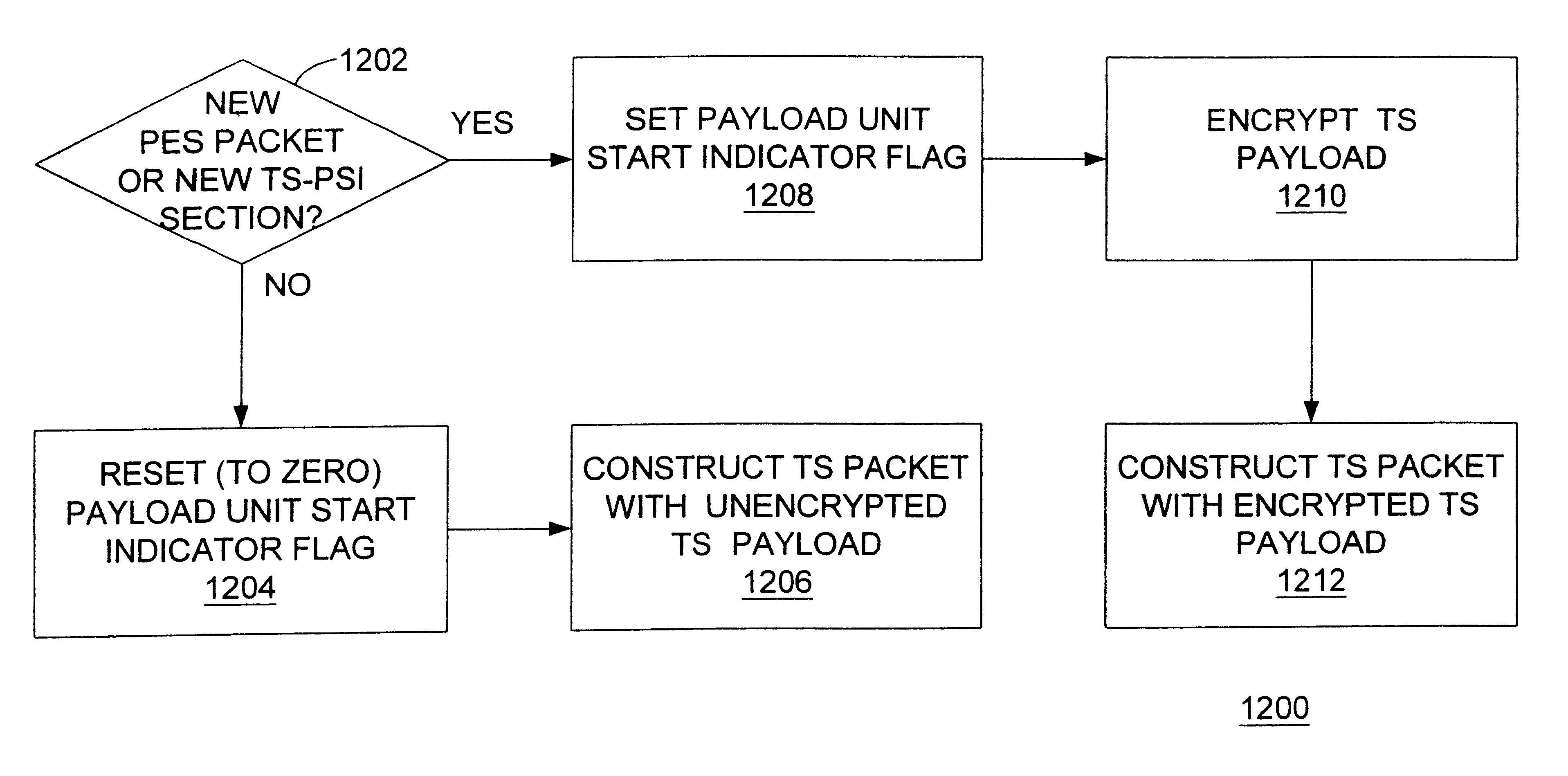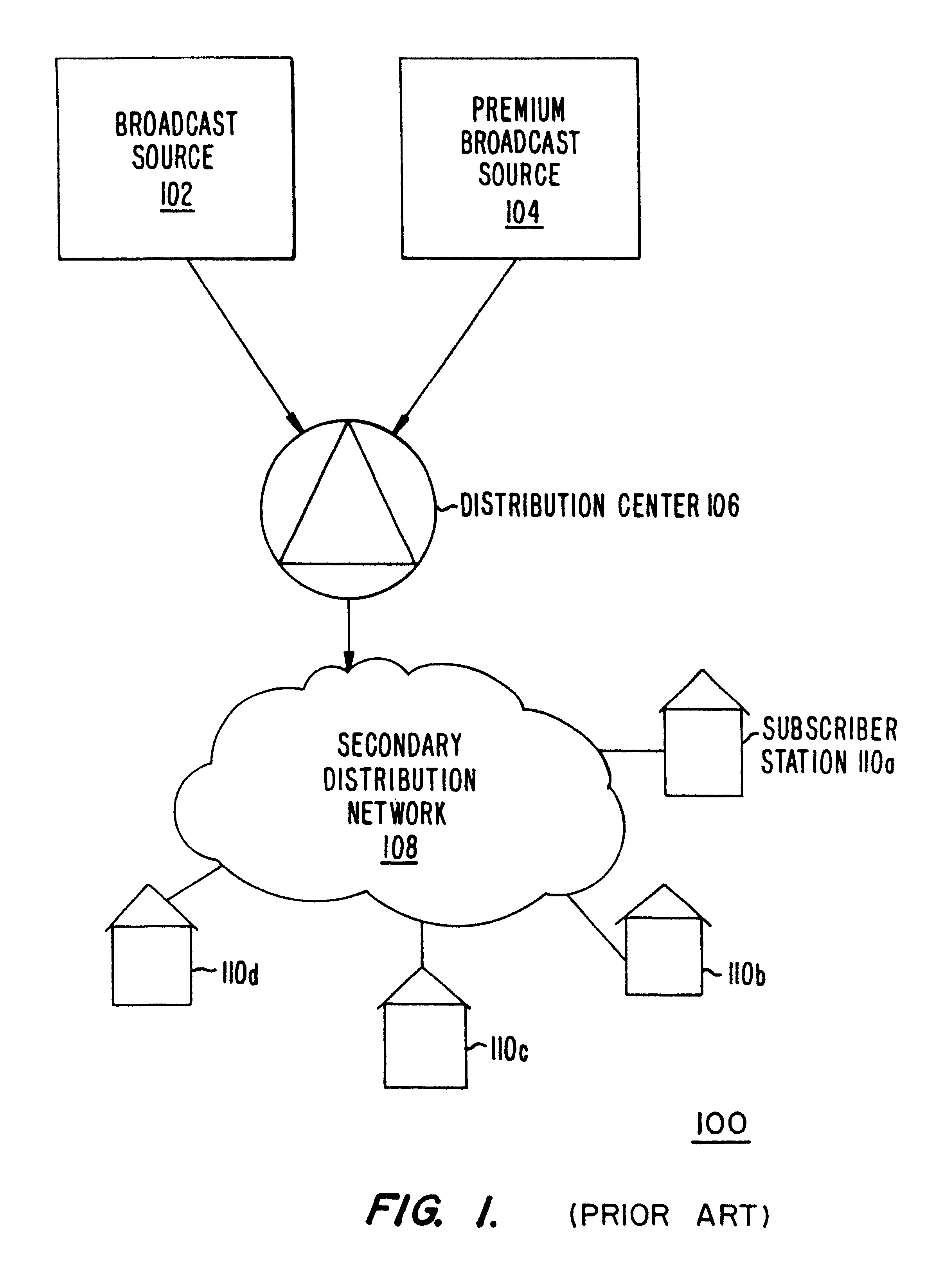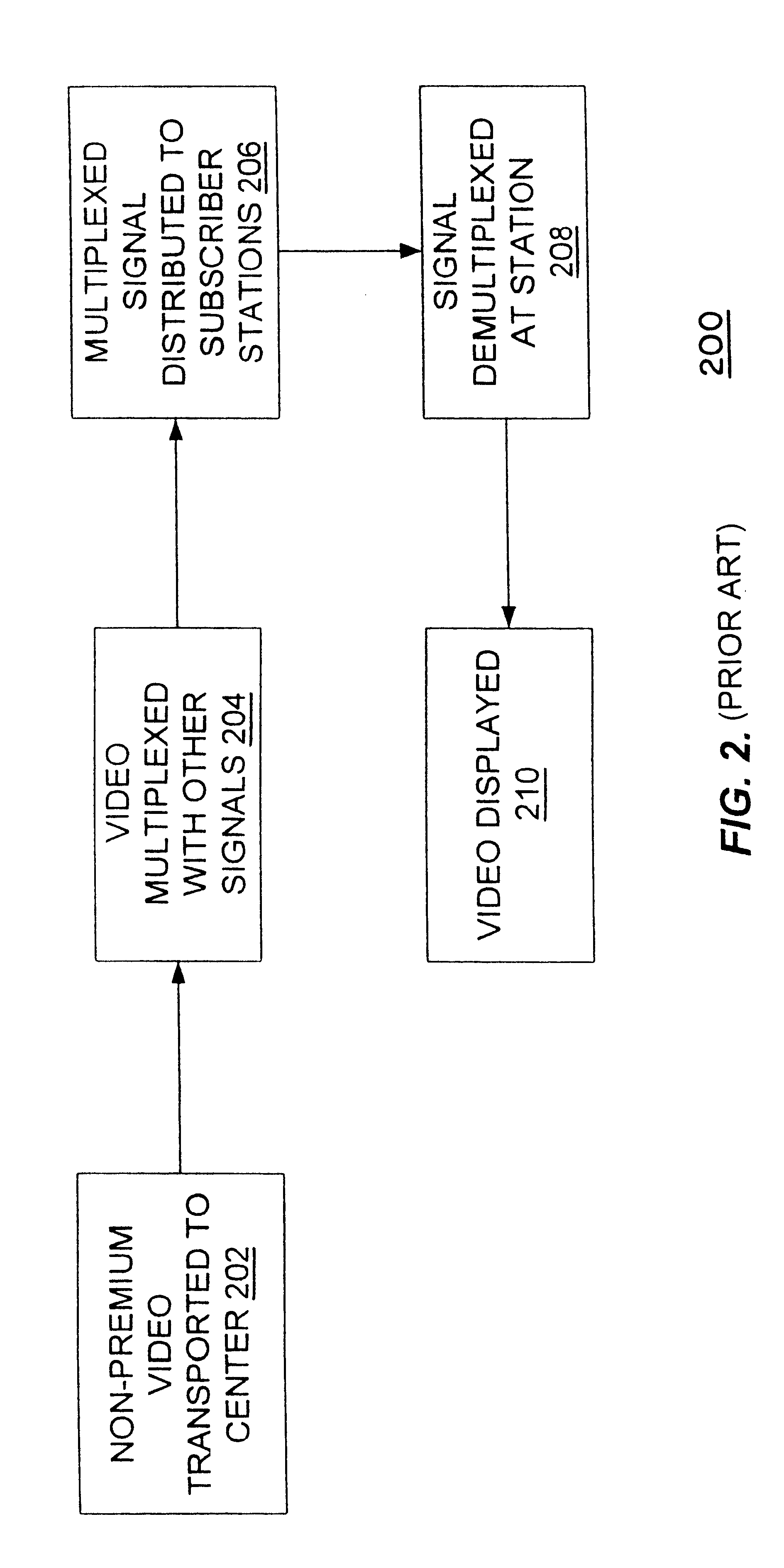Selective and renewable encryption for secure distribution of video on-demand
a video on-demand and encryption technology, applied in the field of video distribution networks, can solve the problems of impracticality of delivering authorization keys, impracticality of digital vod security schemes, and high cos
- Summary
- Abstract
- Description
- Claims
- Application Information
AI Technical Summary
Problems solved by technology
Method used
Image
Examples
first embodiment
FIG. 12A is a flow chart depicting a process for selective encryption (1200) utilizing the payload unit start indicator (SI) in accordance with the present invention. This process (1200) may be utilized to reduce the amount of encryption required while maintaining a high level of security. This process (1200) is performed during the construction of the TS packet (1100).
In a first step (1202), a determination is made as to whether the TS payload (1104) will contain a new PES packet or a new TS-PSI section. If the TS payload (1104) will not contain a new PES packet or a new TS-PSI section, then in a second step (1204) the TS packet (1100) is constructed with the SI flag is reset to zero, and in a third step (1206) the TS packet (1100) is constructed with an unencrypted TS payload (1104). In alternate embodiments (not shown), the third step (1206) may occur before or in parallel with the second step (1204).
Otherwise, if the TS payload (1104) will contain a new PES packet or a new TS-PS...
second embodiment
FIG. 13 is a schematic diagram showing a TS packet (1100) including a selective encryption status field (1302) in accordance with the present invention. As shown in FIG. 13, the selective encryption status field (1302) is pre-appended before the TS header (1102) in the structure of the TS packet (1100). Selective encryption status field is either prepended or the transport Scrambling Control (SC) flags are used to mark the selected encryption.
FIG. 14A is a flow chart depicting a first process for encryption (1400) in accordance with the second embodiment of the present invention. The first process (1400) corresponds to a highest level of security, where the TS payload (1104) is encrypted for each and every TS packet (1100).
In accordance with this first process, in a first step (1402), the selective encryption status field (1302) is set. This first step (1402) is done for all TS packets (1100). In a second step (1404), the TS payload (1104) is encrypted. Since the selective encryptio...
PUM
 Login to View More
Login to View More Abstract
Description
Claims
Application Information
 Login to View More
Login to View More - R&D
- Intellectual Property
- Life Sciences
- Materials
- Tech Scout
- Unparalleled Data Quality
- Higher Quality Content
- 60% Fewer Hallucinations
Browse by: Latest US Patents, China's latest patents, Technical Efficacy Thesaurus, Application Domain, Technology Topic, Popular Technical Reports.
© 2025 PatSnap. All rights reserved.Legal|Privacy policy|Modern Slavery Act Transparency Statement|Sitemap|About US| Contact US: help@patsnap.com



